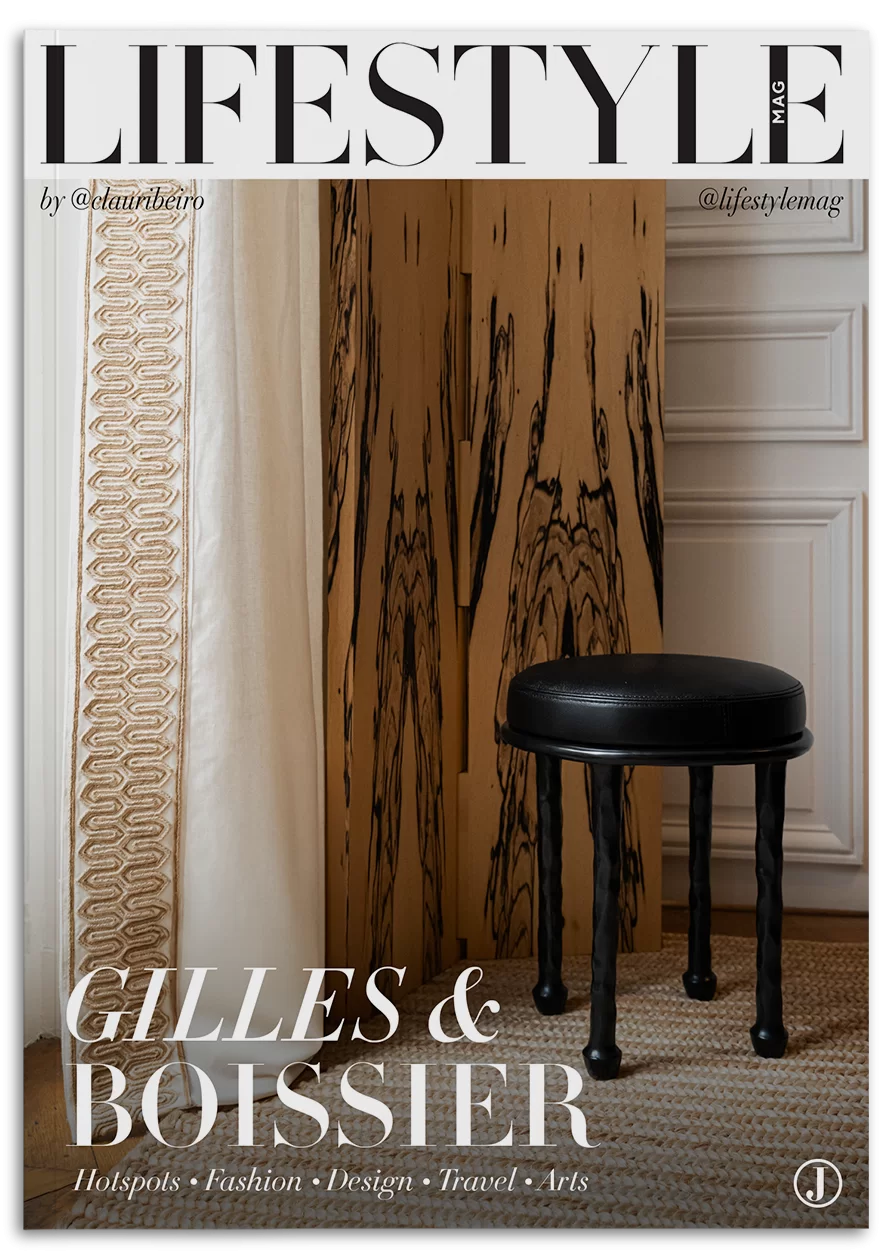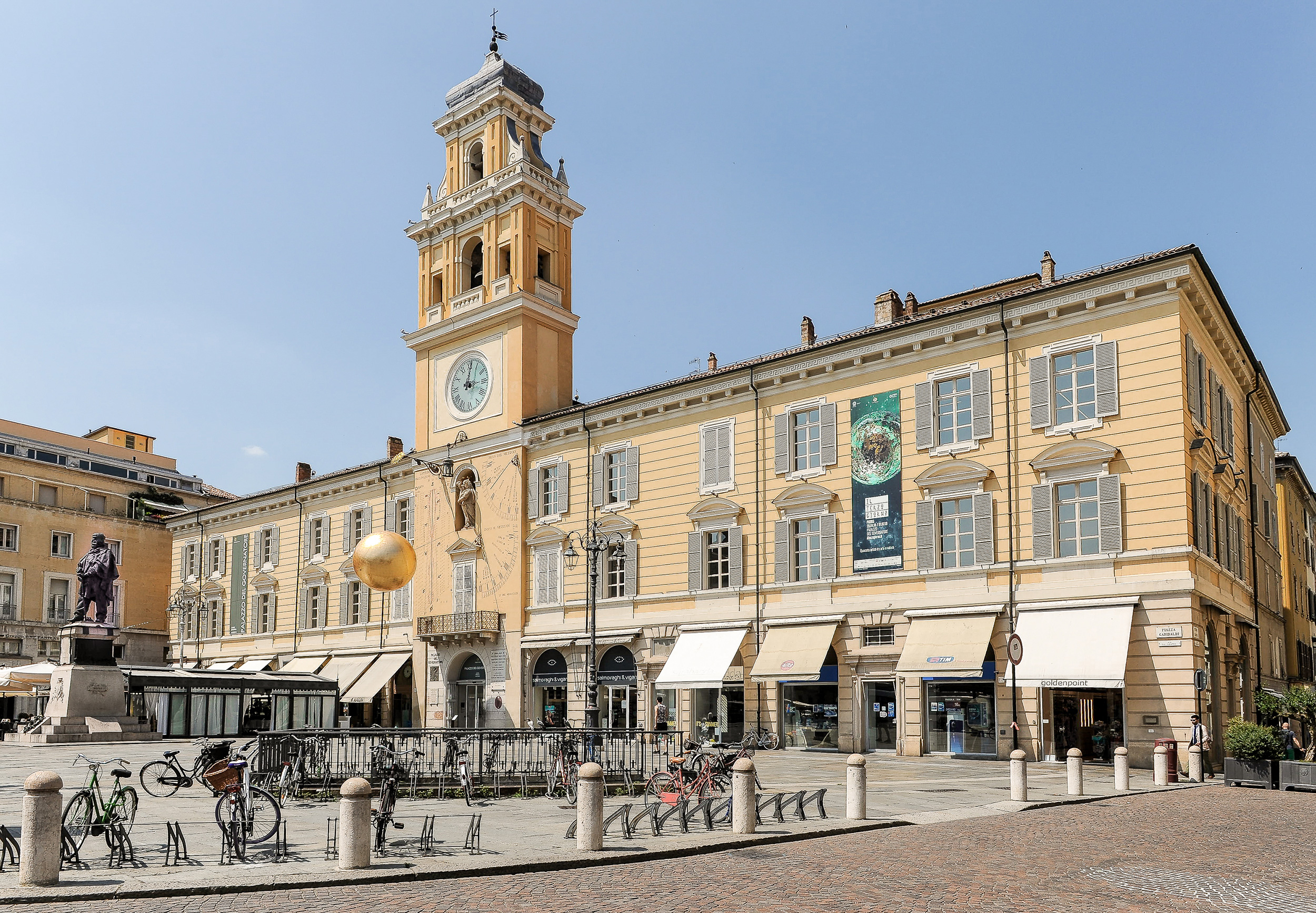
Italian Treasures
Parma and Modena, two cities that, for those who know a bit about Italy, already make your mouth water. As truly classic travel destinations, capable of whisking us away to simpler moments of a not-so-distant past, these cities have unique experiences to offer and a rich history to share.
By Wallace Rezende and Claudia Ribeiro
That history is intertwined with our own here in Brazil, after all, we are the largest Italian population outside Italy. Concentrated mainly in São Paulo and Rio de Janeiro, descendants of Italians brought much of the country’s culture to our lands, but going far beyond blood ties, Parma and Modena have bequeathed many intangible heritages to humanity.
From Modena, we inherited Balsamic vinegar, Lambrusco wine, and all the delicious recipes the region created, from Modena salad to fried gnocco. From Parma, we inherited Parmigiano Reggiano, the king of cheeses, Prosciutto Crudo, Pesto di Cavallo, and more.
How about we talk a bit about these delicious cities in this article? Taking advantage of the tourism rebound and the easing of international travel, maybe you’ll choose your next destination now, to debut that outfit you’ve put together and haven’t yet had a chance to wear.
A bit about Parma, a city of elegance
Parma’s elegance can be felt in every corner of the city. Both due to the history that emanates from all its buildings and because of its prosperity. Parma is one of the most successful cities in the entire Emilia Romagna region. Much of this is due to the production of all its traditional items, whether we’re talking about Parmigiano Reggiano (the classic, unmistakable Parmesan), prosciutto, or even the famous perfume brand: Acqua di Parma.
Just walk around Piazza Garibaldi to see various designer clothing, perfume, and jewelry stores. In this sense, the city is more geared towards tourist attention than cultural preservation, but that doesn’t mean you won’t have access to its historical side. Just head to Piazza Duomo and you’ll find one of the largest domes in a cathedral in northern Italy.
With beautiful paintings, hyper-intricate arabesques, and a simply divine ambiance, the Cathedral is a stunning place for photography, meditation, divine connection, or simply for relaxation after strolling through the city’s shops and windows.
Stepping a bit away from the city center, there are some really fun experiences you can have in Parma. A few of them are:
Visit to Piazza della Pace
Going to this square involves a tour of several tourist spots. This is where the university area of the city is located, so you can find everything from libraries, used-book stores, theaters, museums, to cafés. The place is spectacular, and the green area invites us to take a photo;
Galleria Nazionale:
This art museum is one of the most important in the region. With works ranging from the 13th to the 19th centuries, the Galleria Nazionale has collections from various artists, schools, and masters, making it a vast and extremely rich exhibition;
Teatro Regio
We couldn’t miss mentioning the Teatro Regio, which currently stages around four operas each season from mid-January to April. Every year, great opera stars appear here and put on a true spectacle of music and sound capacity. The theater itself is a show in its own right, with private boxes, emblematic architecture, and a majestic dome painted with impeccable detail.
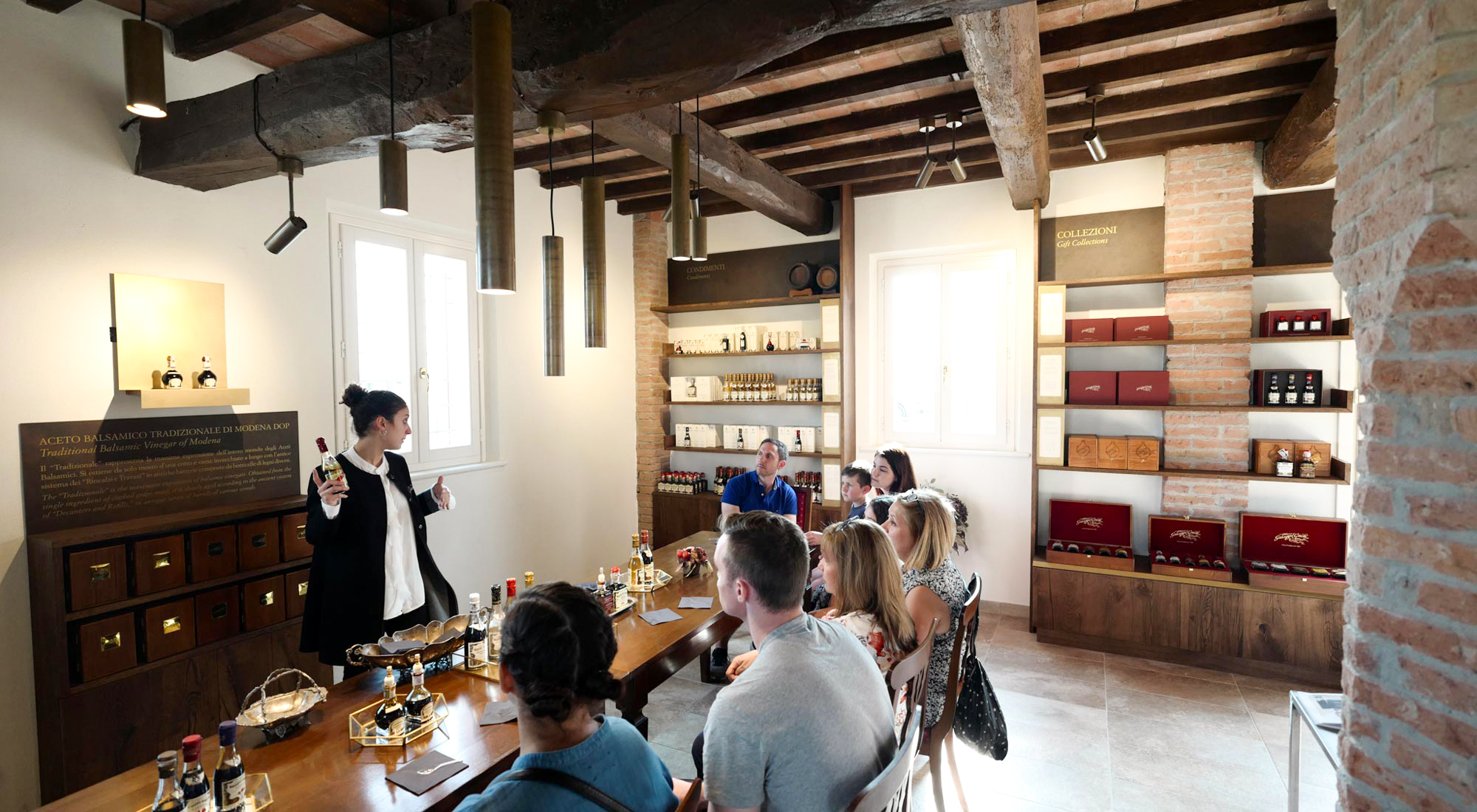
Now let’s take a separate tour to the food. Italy is famous for its gastronomy, but it is in the region of Parma, Emilia-Romagna and Modena that some of the ingredients used in cuisine are made.
In the region of Italy’s most famous cheese and the world’s most sought-after prosciutto, you can’t miss a tour explaining the production methods, right? In Parma you can find both tours that last a few hours and trips and excursions that can even take you outside the city, exploring farms, trattorias, and more; our tip is to visit the Viator app where you can book and pay for the tours. I, Claudia, did it and loved it. The highest ranked companies pick you up at your hotel bright and early, and in one day you can experience cheese, ham, and balsamic vinegar. If you’re not in a hurry like I was, you can split them into two days.
Parmigiano-Reggiano and the Monks
Known as “The King of Cheeses,” Parmigiano-Reggiano is one of the oldest cheeses in the world; there are records of its use in recipes dating back to 1254, and it was created by monks seeking a cheese that would perish less quickly. I think it’s important to share with you some details I learned on the tours and the reasons these specialties are so famous worldwide. The answer? Quality control. Just as in the Champagne region you find the famous French drink and nowhere else. Likewise, in the Parma and Reggio-Emilia region (two different places) you have Parmigiano-Reggiano, a compound name because the cheese can only be produced by manufacturers from these two regions and is protected by the Consorzio Parmigiano Reggiano and recognized in the PDO list. And what is PDO? The acronym stands for “Protected Designation of Origin,” a seal with a type of geographical indication from the European Union and the United Kingdom aimed at preserving the denominations of food products. Now let me explain something that will blow your mind. When you arrive at a restaurant in the United States, for example, and they offer you “Parmesan,” it is not the authentic Italian-made cheese, and this is causing a huge dispute between the two countries. The FDA (U.S. Federal Food and Drug Administration) says that Parmesan is cheese made using the same process as the Italian one, but the types of milk used and what goes into the mix is a real mess. It can be skimmed milk, cream, whole milk, and even water, yes water. Also, anyone can produce it, from any region, so there is no real quality control. Do I eat this cheese? I do, but only in grated form for pasta, for example, and not as a piece of cheese to eat as an appetizer or to cook with, because it would be a real waste to change the temperature of the genuine cheese made in Italy.
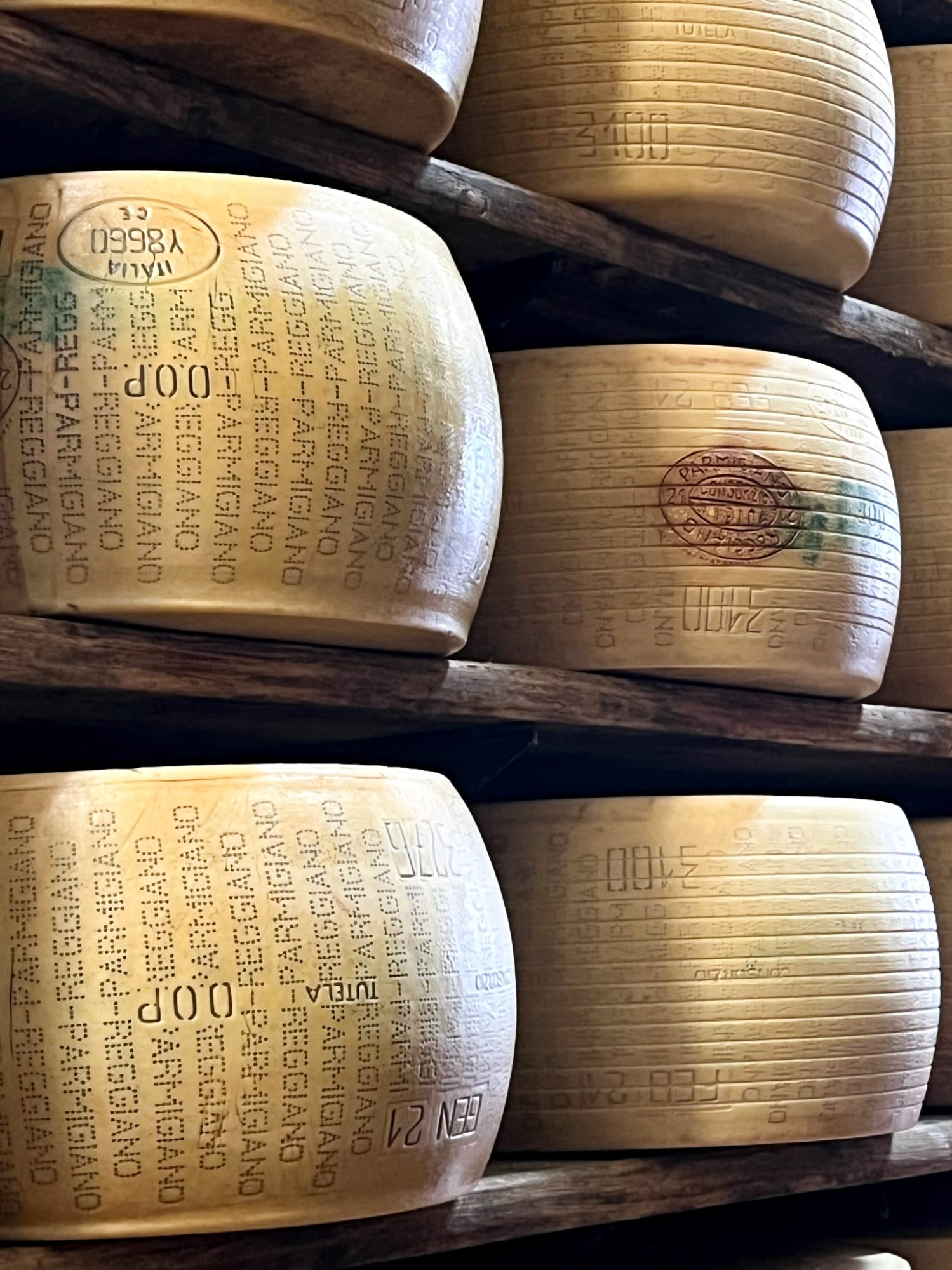
There are only 330 producers who supply the cheese to the whole world, can you believe it? The regions considered official for production are exclusively: Parma, Reggio-Emilia, Modena, Bologna (only to the left of the Reno River), and Mantua (only to the right of the Po River).
It takes 150 liters of milk to make one wheel of cheese, and the cows are specially cared for with massages throughout the day and fed with a special organic grass. The cheese is 100% natural, with no chemical processes. And the most interesting thing is that, like wine, the cheese also has an aging period, some for one year, up to 24 months. Its texture changes, and the cheese master, a sort of quality control inspector belonging to the regional consortium, evaluates each wheel and each producer. He uses a little hammer to tap each one, and depending on the sound emitted, he can attest whether there is air or bad formations, and then the cheese is classified as “Parmigiano-Reggiano (first class), Parmigiano-Reggiano Mezzano (with some small holes, second class), and the third is generically called Sbiancato, but it’s not an official name,” comments Mattia Brianti, our guide on this experience.
Then we move on to the classification of the purest cheese:
12-18 months: Aromas of yogurt and fresh fruits. Crumbly, delicate.
22-24 months: Grainy texture, with balanced flavors of dried fruit.
30-36 months: Very crumbly, grainy. Notes of toasted nuts and meat broth.
Over 40 months: Layered texture, complex and very firm.
Prosciutto di Parma
We moved on to another delight and another tour I took: Prosciutto di Parma. After a few minutes of climbing up the region, I came across a beautiful valley; the factory is located on top of a mountain. And that is one of the most striking characteristics of this ham: its location. The product’s specific flavor comes from the creation of the ideal climatic environment formed by hills around Parma shaped by the sea breeze from the Adriatic Sea and the Apennine mountains. In spring, after being properly trimmed and inspected, the Prosciutto legs go to a specific room where windows are opened so that the breeze from the mountains and the sea create the perfect blend that gives the flavor only Prosciutto di Parma can offer. The piece must weigh between 15 to 18 kilograms, and it also receives no chemicals, undergoing a totally artisanal production and a two-year maturation with regular and meticulous inspections of each piece.
These are some of the many experiences you can have in Parma. Many more can arise from those we’ve mentioned; you just need to let yourself be carried away by Parma’s creative winds to seize the opportunity. How about now learning some more details about what to do in Modena, but first, a brief introduction to the city and region.
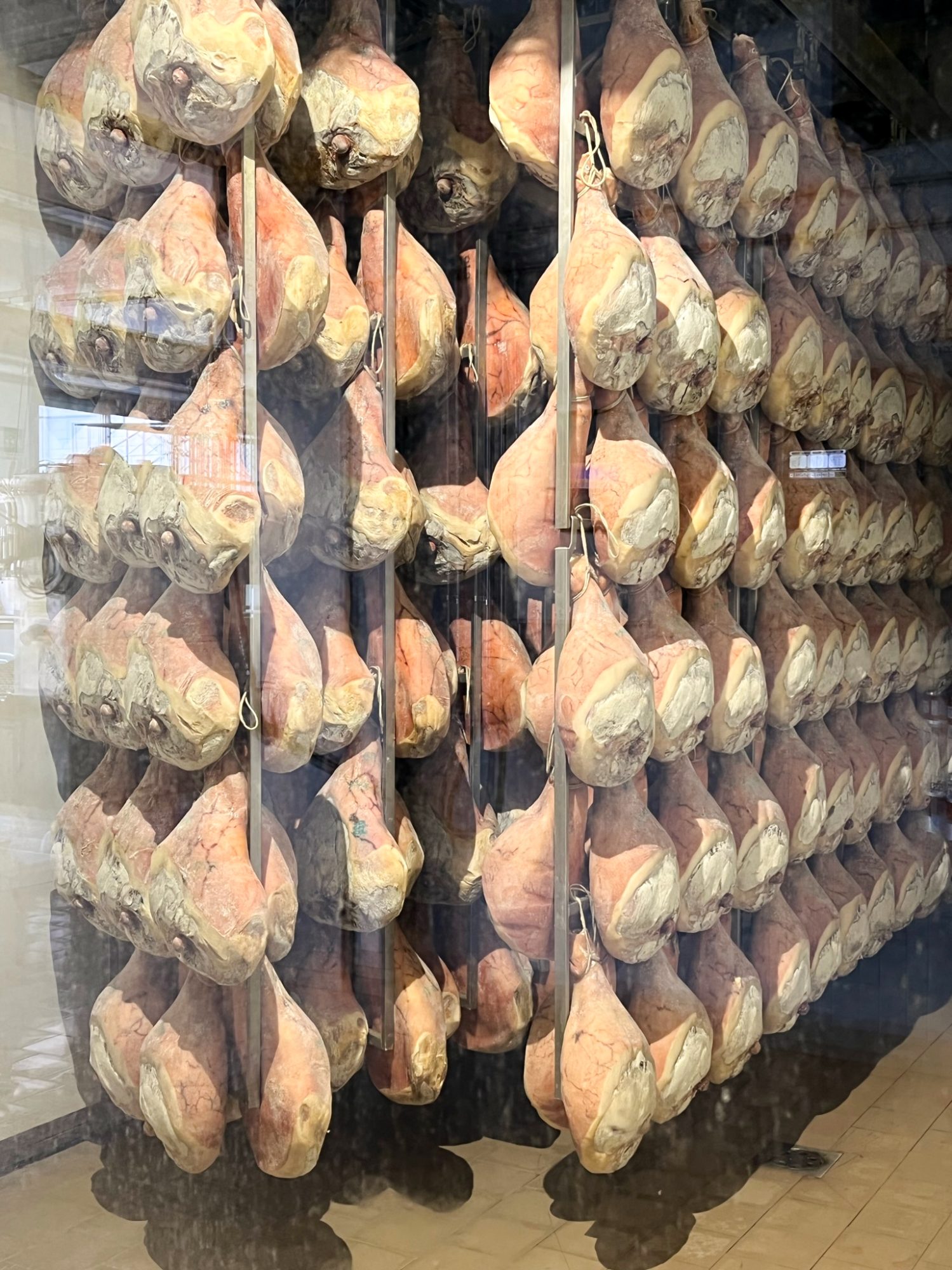
The spiritual capital, Modena
In the Emilia region, Modena is considered the spiritual capital. The reason? Well, this is where the region’s cuisine is born and flourishes, where culture exists in its rawest form, so to speak. Modena is where the tenor Luciano Pavarotti was born, and where the famous Italian cars took shape: Lamborghini, Ferrari, and Maserati.
Of course, Bologna still holds the title of provincial capital, but we cannot deny that historically, Modena seems to have brought to the world a wide range of influences, creations, and culture.
It is here that we can find Modena Cathedral, a highly important Romanesque building that carries within it both the imposing form of Roman architecture and historical inscriptions that still help us better understand the Roman Empire today.
In Modena, an experience you can’t miss is the tour of the Aceto Balsamico di Modena producers.
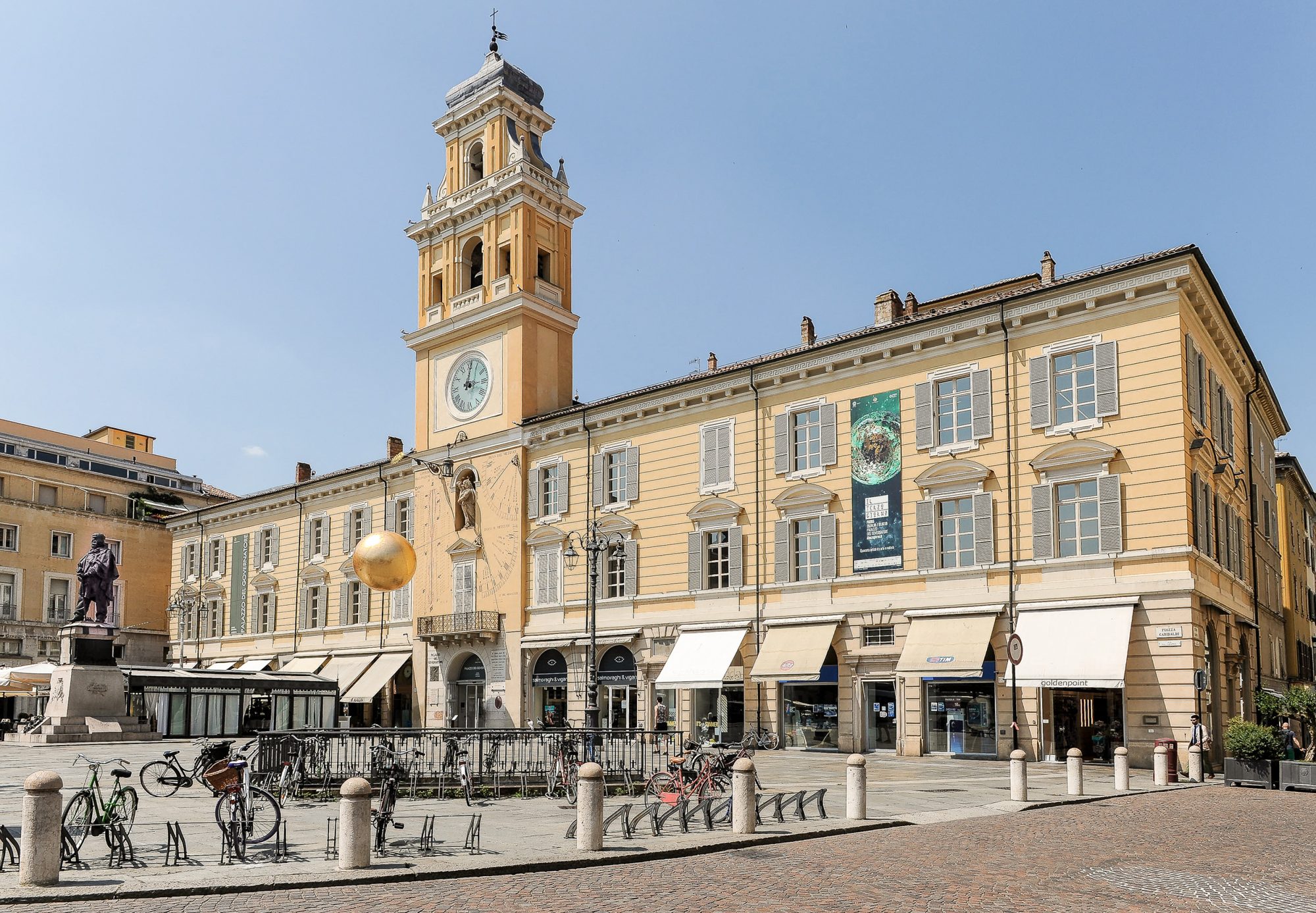
Craftsmanship in the Form of Vinegar
We visited a special place: Giuseppe Giusti’s Aceto di Modena production, which opened its doors in 1605. On this tour, you can stroll through the Giusti Museum, which offers an extraordinary journey through an invaluable collection of objects and documents preserved for generations: from the ancient jars used for preservation, to the tools used over the centuries by vinegar makers, to the first bottles and advertising brochures from the early 20th century. Among the most precious mementos are the centuries-old barrels, such as barrel “A3” with which, on the occasion of the Italian Exhibition organized by the House of Savoy in Florence in 1861, Giuseppe Giusti was awarded a gold medal for a “90-year-old balsamic vinegar.” Through old commercial documents and objects, the Museum traces the history of Modena balsamic vinegar and its connection with the Giusti family. The quality of the Balsamic Vinegar here is literally majestic. In 1929, the King of Italy, Vittorio Emanuele III, granted the title of “Supplier to the Royal House of Savoy,” giving Giusti the privilege of displaying the Royal Warrant Seal, still incorporated in all Giusti Balsamic Vinegars today.
In addition to this wonderful experience, we’ve gathered other great tours and tips for things to do around there:
Ferrari Experiences:
With so much buzz around Ferrari and the factories surrounding Modena, it’s certain the factory would provide some type of immersive experience, right? The brand offers visits to the Ferrari Museum, day tours of the factory, as well as visits to the Lamborghini museums. In these spaces, you can see some car prototypes, old models that have gone out of circulation, as well as explanations about what makes the brand’s cars so well-known and adored by speed enthusiasts;
Walk Starting from Piazza Roma:
A walk through Modena that starts at Piazza Roma opens doors to several magical encounters, beginning with the Palazzo Ducale Modena, continuing to the Teatro Comunale Luciano Pavarotti, Via Emilia (a super chic street full of shops, cafés, and souvenir stands), passing Piazza Grande and Piazza Mazzini. All these destinations are iconic and very special, ideal for experiencing the Modena that Italians live;
Europa’92:
If you want to have lunch in a special place, Europa’92 is your pick. This restaurant is located in the house where Pavarotti lived, and whenever arranged, the waiters put on singing shows. If you want to know more about the schedule, just search for Ristorante Europa 92 on Google to find the official site;
Osteria Francescana:
To complete our essential tips, we couldn’t fail to mention Osteria Francescana, Massimo Bottura’s restaurant, considered one of the best restaurants in the world, and an icon for many other Italian restaurants around the globe. Remember that the restaurant is just one block away from Sala Truffaut, an underground-style cinema where you can enjoy some of the local alternative production and dive even deeper into Modena’s cultural scene.

These are our 5 essential tips for Modena, like a head start so you know where to begin. Once the trip starts, there is something about the destination and how it shapes our days on adventures abroad. It is partly because of this that I decided to bring some very personal tips for you.
What to look for in Parma and Modena
I believe that the opportunities for a great trip hide around every corner. I always seek an immersive, spontaneous experience that gives me some understanding of the local dynamics. That’s why I always plan to stay in an Airbnb, so I can occasionally prepare my own meal. And that is what I try to focus on on the first or second day: find the nearest market and buy ingredients for a typical dish.
In the Emilia-Romagna region, there is no shortage of delicious ingredients for you to try, and in Italian markets you can find spices from all regions, like Tuscan peppers and flowers or Venetian salts. Choose the items you want to work with and get to work. On the way to and from the market, you will certainly encounter some tourist spots.
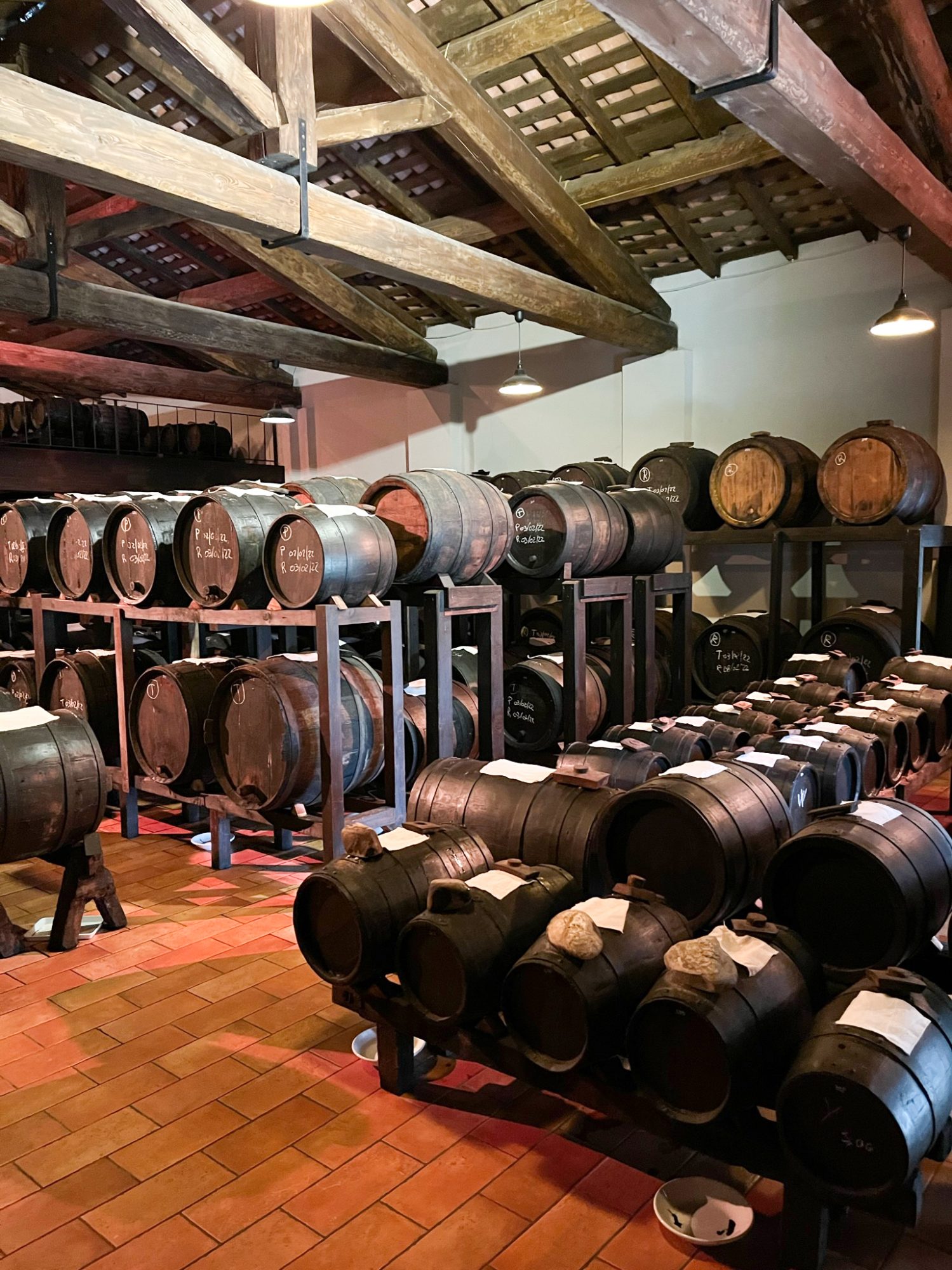
Another tip I usually give and always keep in mind on every trip is: allow yourself to improvise. Some unforeseen events may happen: restaurants can be full, a museum may be closed, and an experience can be canceled. At that moment, there is no room to get down – how about visiting a local bookstore, library, or park? Many of them have amazing city views, and you might find an angle few allow themselves to experience.
Create moments just for you, seek out the events and monuments that please you. Not all trips need a checklist. Take a look at our listing, get inspired by it, and find your direction. I’m sure you will reach the end of your trip with a sense of relief, having exercised your creativity in a unique way, that your trip was truly yours, and that only you could have lived the experiences the way you did.
General information about places we recommend:
Claudia stayed in Parma at the Hotel de La Ville, but there are also the NH among others. For the tour, we made reservations through the Viator app; you can select and purchase the tour we took in thislink here.
Lose yourself in Parma and Modena
Well, these are our tips, our recommended experiences. To wrap up, a final note: don’t forget to enjoy the delicious wine and sparkling wine labels that you can even buy at the supermarket.
Have fun and make this a trip you will never forget. We hope this article helps you achieve that goal.

